Springtime in Arcadia: What to See, Do and...
Just a short distance from Athens,...

Above the clouds. Saddled equines on the road connecting Aetos with Nymfaio.
© Perikles Merakos
A picturesque Greek village is always more than just that, and this is certainly the case for Nymfaio in Florina. It is not just a beautiful traditional village at 1,350 meters altitude on Mount Vitsi; to reach it the visitor must drive the last 15 minutes uphill on a bendy road, keeping an eye out for packs of saddled equines, which claim a large part of the road.
The village of Nymfaio is surrounded by thick birch forest, with paved donkey tracks and refurbished stone mansions with corrugated tin roofing, replacing the old slate roofs to better allow the snow to slide off. It is also a sparsely populated place where the permanent inhabitants, who number around 40, complain about the loneliness on Monday, Tuesday, Wednesday and Thursday – the days when visitors are less frequent.
Nymfaio is not just one the top destinations in northern Greece, despite its remoteness. It is also a place which, before being revived by architectural renovations and tourism in the 1990s, had all but withered away. One thing is for sure, this is not a sterile place fixed in time, but a village where quinces lie fallen from the trees and noisy dogs roam with bells around their necks.
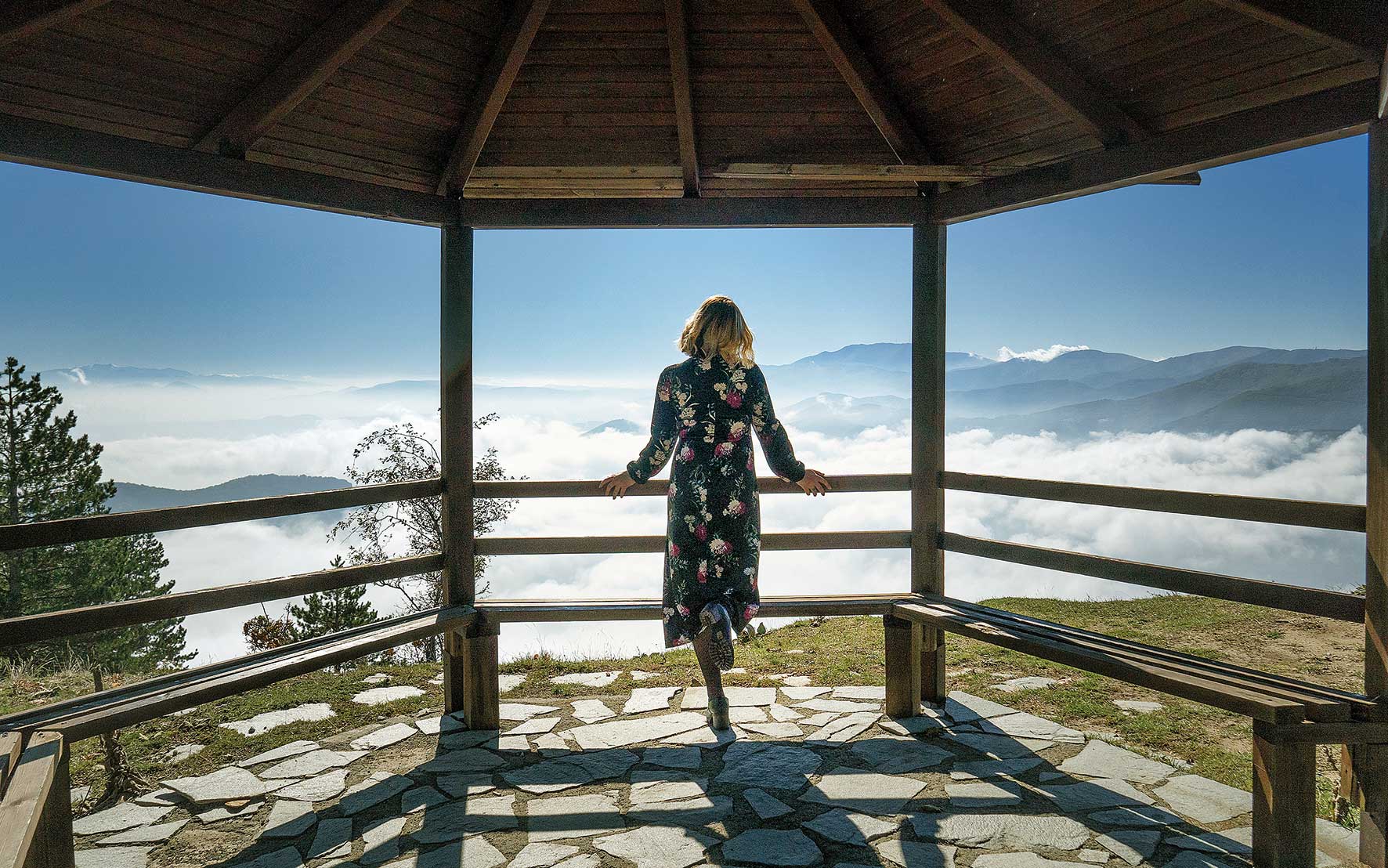
A pause to enjoy the view from the lookout at the entrance to the village.
© Perikles Merakos
Up until 1926, when the village was officially renamed in the government gazette, the place was known as Neveska, and before that Niveasta, which means “bride” in the Vlach language. Nymfaio is a Vach village, with special privileges dating back to the Ottoman era, with a strong silversmithing tradition and a community of merchants who travelled widely.
Its solid architectural identity, at least to the untrained eye, creates the impression of a preindustrial mountain town rather than a simple village. The church of St Nicholas – a three-aisled basilica dating to 1867 – is its best known church, but St Basil, a stone chapel in a natural setting, is worth a trek to the top of the village, and is an ideal spot for a picnic.
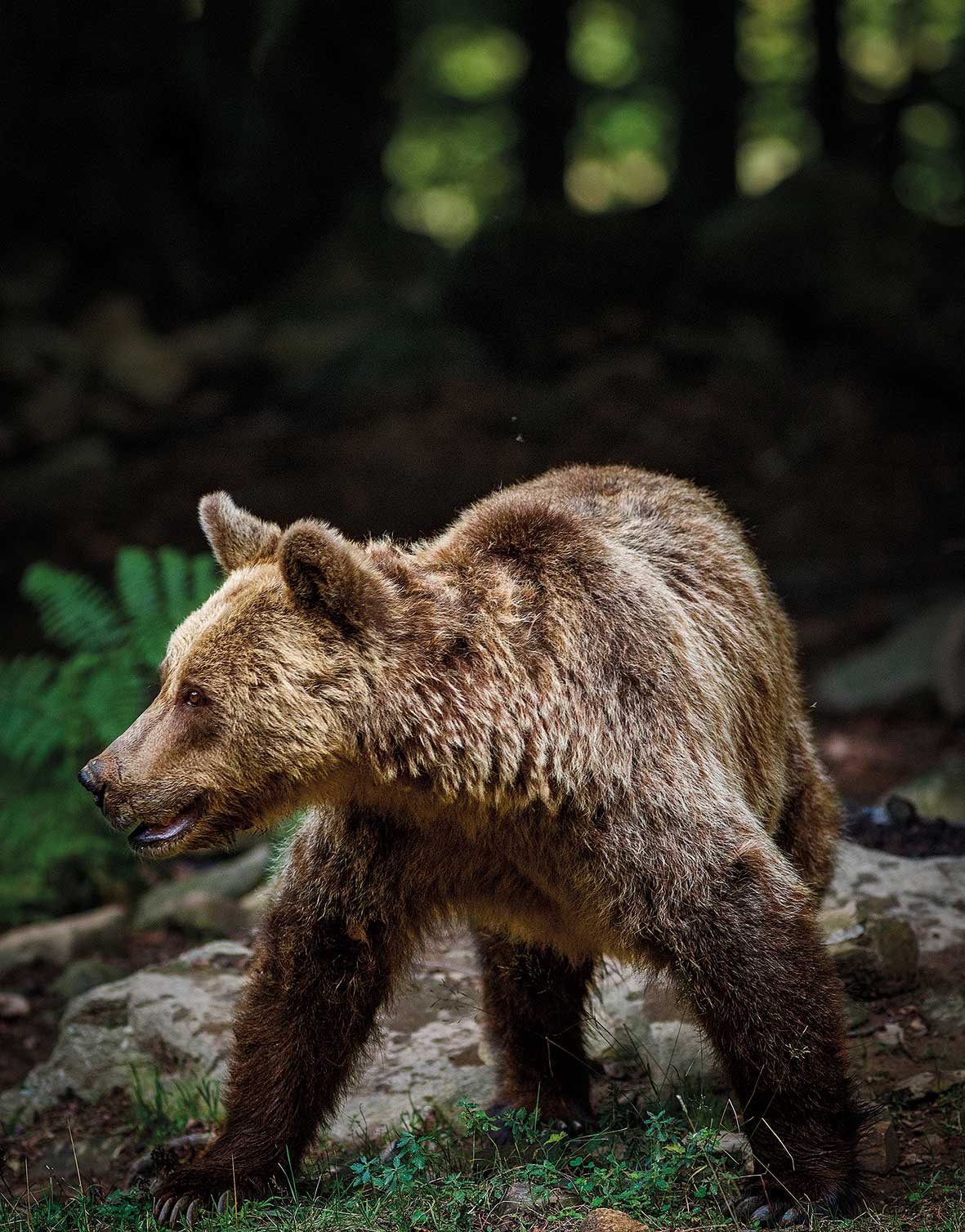
A young bear in the Brown Bear Sanctuary just outside Nymfaio.
© Perikles Merakos

One of three Eurasian lynxes that Arcturos has been looking after for the past few months.
© Perikles Merakos
The most distinctive building in Nymfaio is the Nikeios school, built in an eclectic style with baroque elements in 1927-1928 to house the village’s kindergarten, elementary school, and for some years its junior high school, up until the 1980s when the schools were closed.
The Nikeios now hosts the information center for the Arcturos Brown Bear Sanctuary, an NGO which has been operating for 29 years and is a great asset for the area. How could a visitor not value a place which protects wild fauna, a destination where bears are treated more like members of the ecosystem than like fruit thieves?

The Nikeios school hosts a superb exhibition on bears and their relationship with humans.
© Perikles Merakos
The information center at the Nikeios school introduces the public to one of the most beloved members of the animal kingdom, which humans have come to adore, judging from their representations in pop culture. Teddy bears, Paddington and Winnie-the-Pooh stories, and Teddy Bear biscuits are just some of the positive images of bears which we humans enjoy from a young age. But there is a darker side to Greeks’ relationship with the bear, as up until the 1990s there were still dancing bears in the country, animals that were cruelly abused, and made to walk on hot metal plates to learn to stand upright.
In a photograph by Voula Papaïoannou displayed at the center, we see two “bear-men” beating tambourines for the chained animals to “dance” – a barbaric image, which is followed by contrasting information on bears’ winter hibernation, the constellations of Ursa Major and Ursa Minor (big bear and little bear), and the young girls dressed as bears at the sanctuary of Artemis at Brauron, as part of a coming-of-age ritual preparing them for adult life.
The exhibition is superb, presenting a comprehensive and unvarnished and not at all sentimentalized view on a complex subject. After filling up on information, there can be only one destination: the Brown Bear Sanctuary, a little outside Nymfaio. We were unfortunate in not being able to visit, due to damage from snowstorms, however the damage has since been restored. It is a large enclosed space in a birch forest hosting nineteen bears, including veteran Giorgakis, who was rescued from bear-men in Imathia, but also bears that have been orphaned, re-homed from zoos or confiscated from individuals who had been holding them illegally.
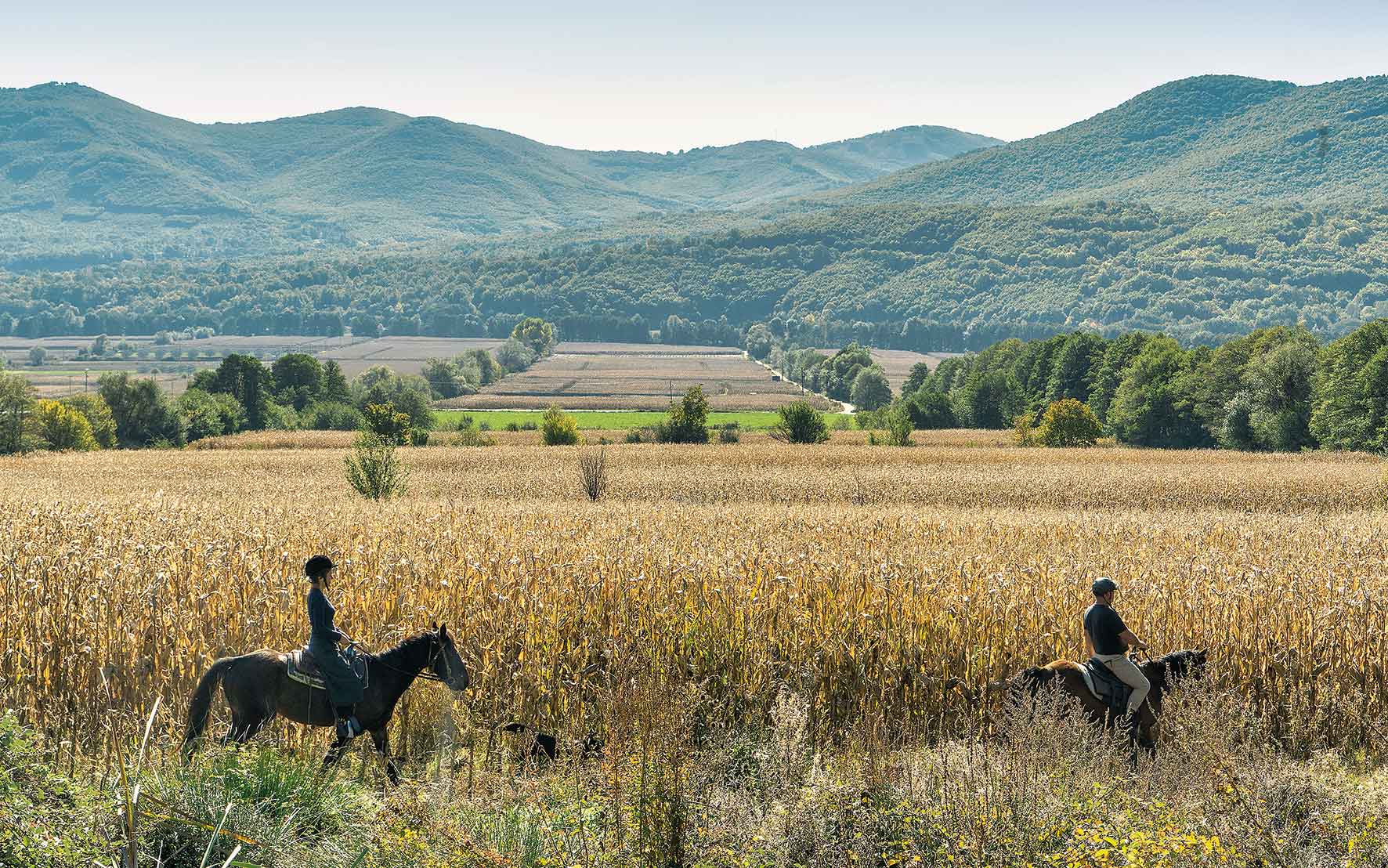
Horse riding lessons on Pindos horses kept by the Voglidis family.
© Perikles Merakos
Next on the itinerary is the Wolf Sanctuary, located outside the village of Agrapidia. This is a different story: the wolf has been slandered and stigmatised, embedded in popular consciousness as a threat. The biggest culprit in this are children’s fairy tales, first and foremost Little Red Riding Hood. But despite the myth which surrounds it, the wolves at Arcturos are themselves victims, animals taken from private “collections,” from building sites where they were kept as “guards” and other tragic circumstances.
The Arcturos sanctuary hosts thirteen wolves, including ten grey wolves and three arctic wolves. We glimpsed the latter fleetingly, as they appeared as a pack, disappeared, reappeared and vanished again as if playing hide-and-seek among the foliage.
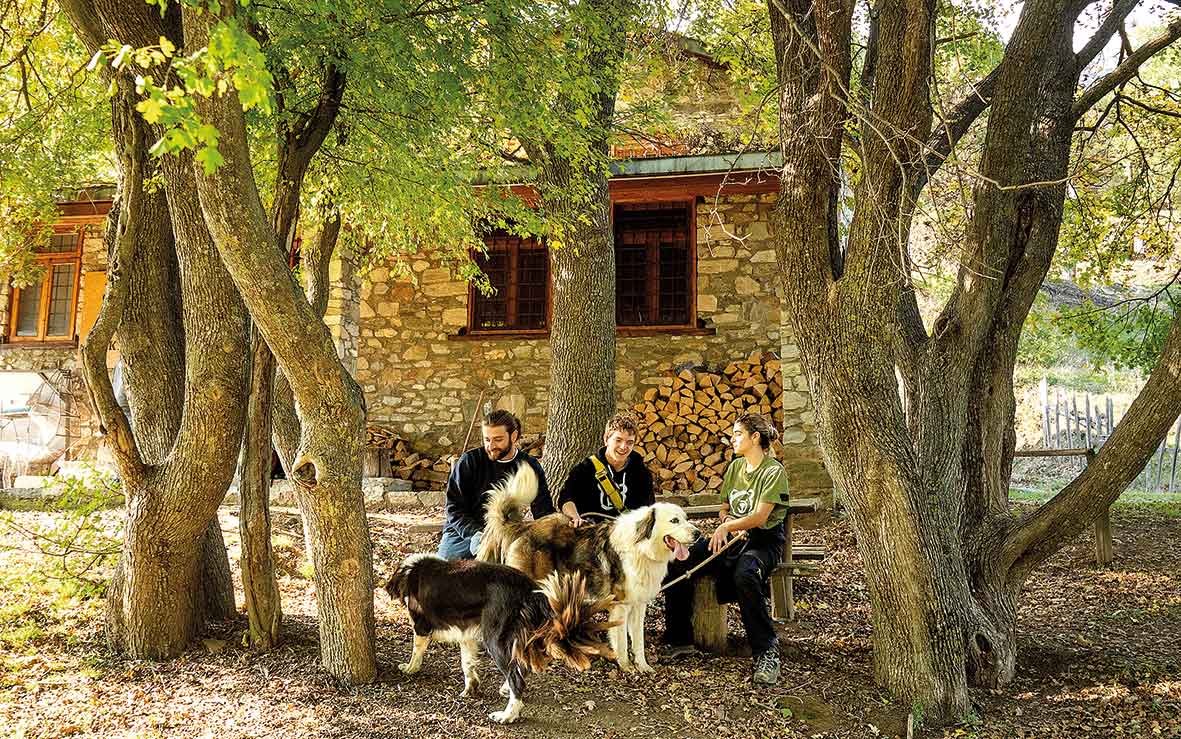
Volunteers tending to Greek sheepdogs at the Wolf Sanctuary outside Arapidia.
© Perikles Merakos
Nearby is the lynx sanctuary, where three Eurasian lynxes (Lynx lynx) are housed since a few months ago when they were moved here from a zoo in Andorra. In Greece, the lynx is considered extinct, so coming face to face with one, seeing its slender legs, pricked up ears and elegant gait is a unique experience. The Agrapidia sanctuary is also host to Greek sheepdogs, a heritage breed, which are bred and given to shepherds. When a flock is guarded by sheepdogs, humans don’t have to resort to violence. This makes it safer for him and for the wildlife.
If the wildlife at Arcturos open windows to new worlds, the same is true of the horses kept by the Voglidis family, which owns the Artemis outdoor activity center at the village of Sklithro, a little way beyond Agrapdia. Twenty certified Pindos breed horses live an enviable life here, roaming free on 2.5 hectares of land. We took a riding lesson with Takis, the father of the family (3.5 kilometers, half an hour), an experience which surpassed all our expectations. After a brief tour of the facilities, Takis encouraged me, despite being a total novice, to take a ride bareback, to get to used to the horse. After that, we rode, this time with saddles, through a forest of linden and alder. We passed through fields of corn (a trial, where the rider must not allow the horse to stop and eat), then tried a trot and a gallop – a unique way to get to know the Pindos breed.
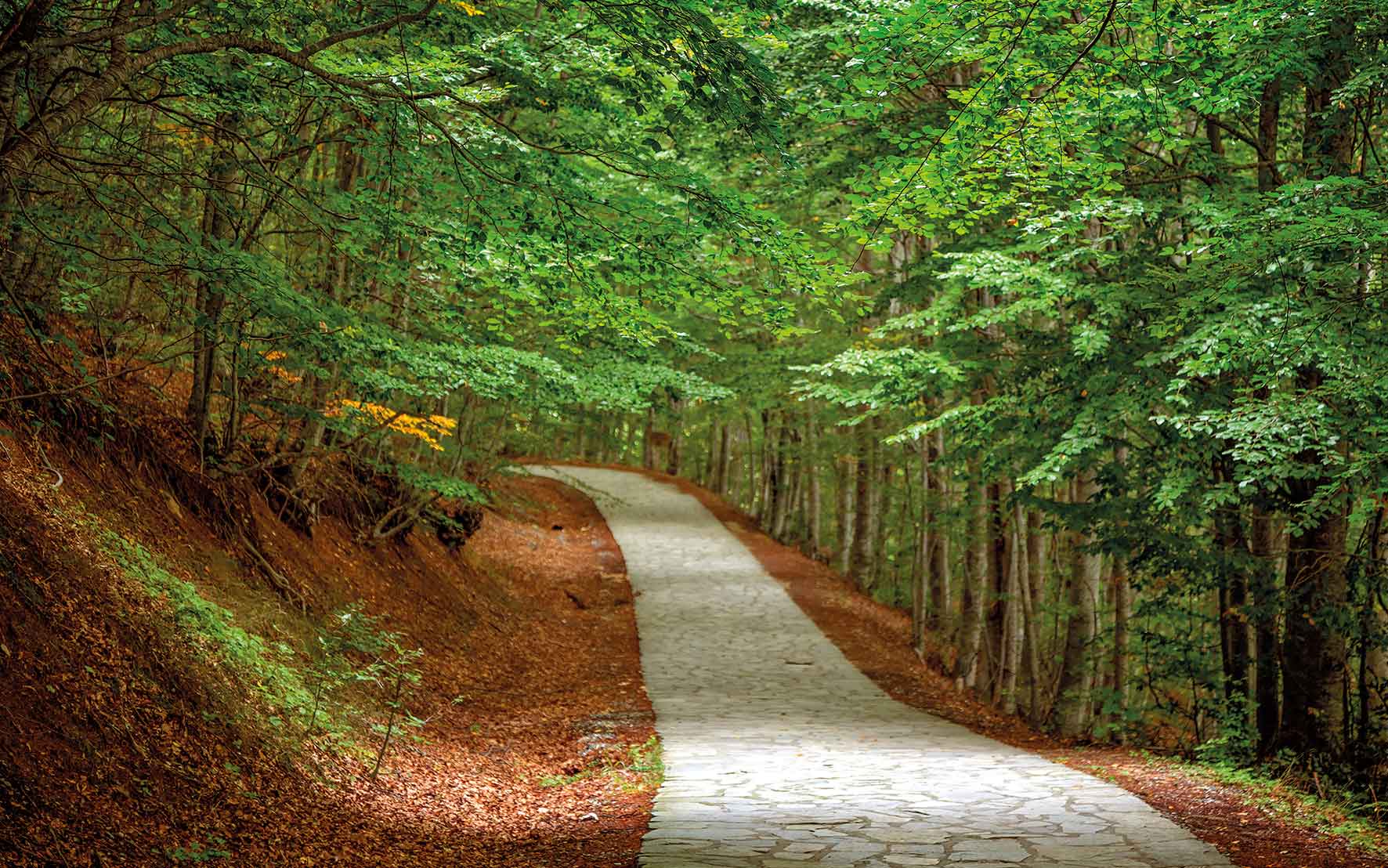
You reach the Brown Bear Sanctuary on foot, walking through woods.
© Perikles Merakos
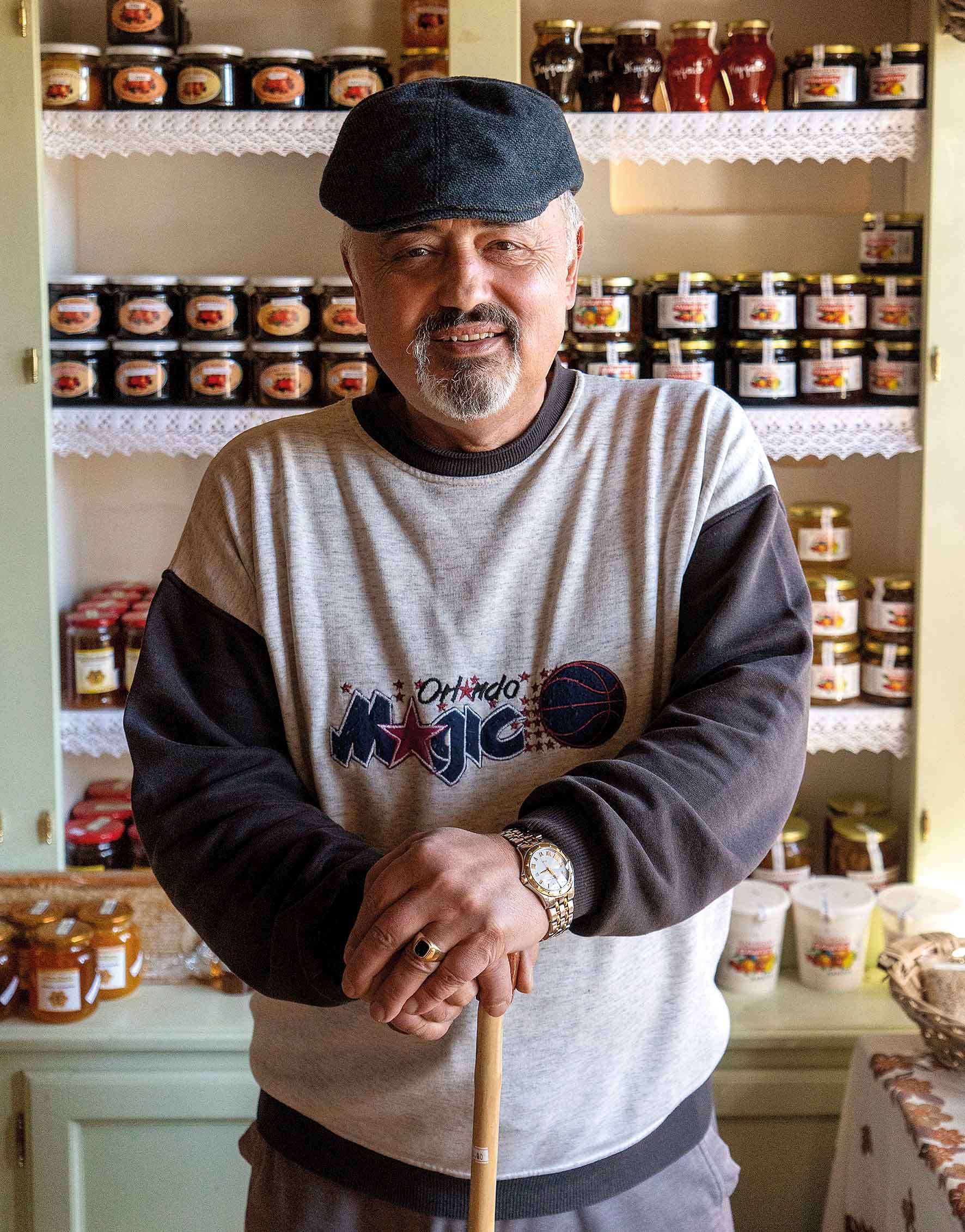
Dimitris Palassopoulos, the soul of Pantopoleio.
© Perikles Merakos
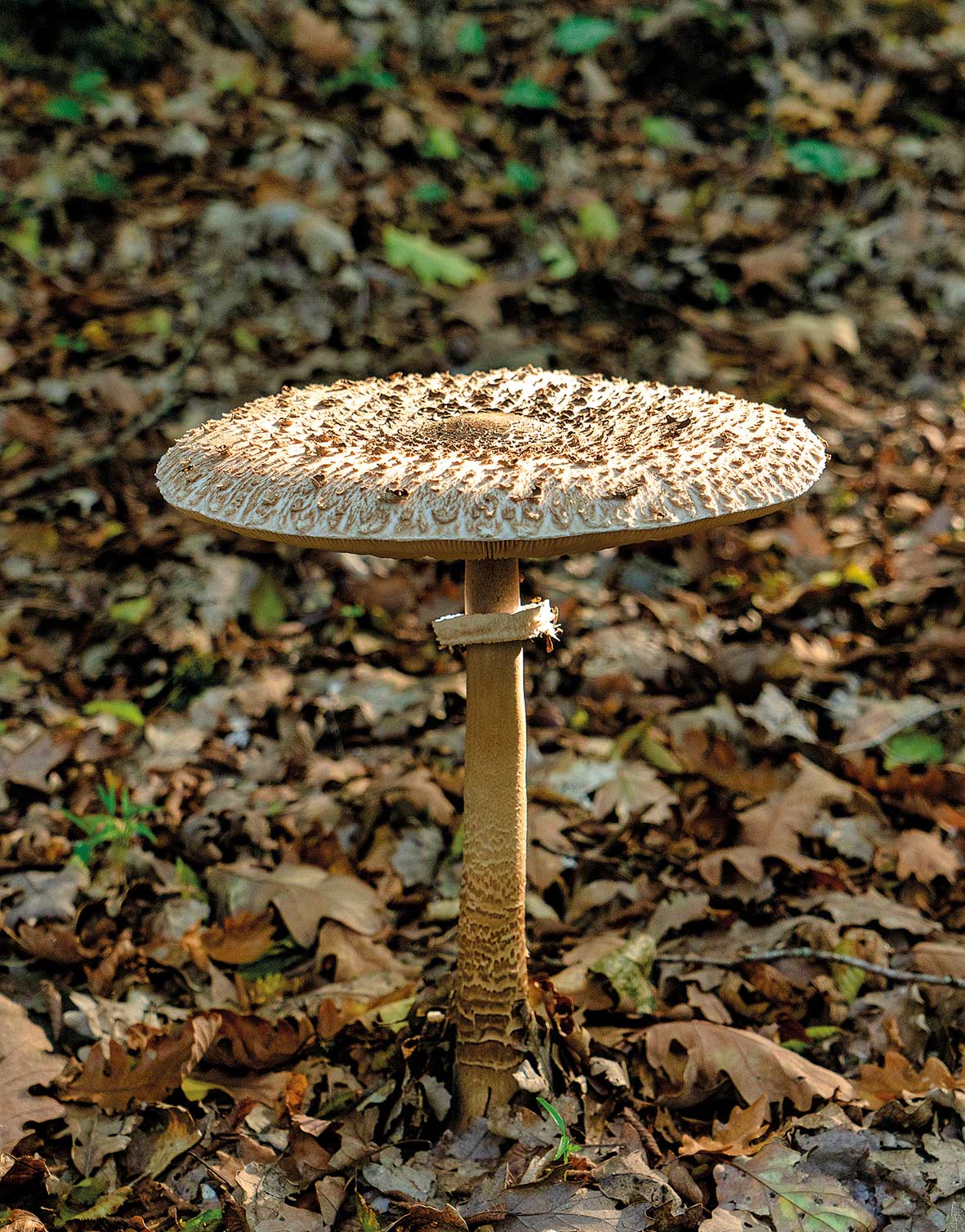
The Macrolepta procera mushroom.
© Perikles Merakos
Another great outdoor activity is the hike from the Wolf Sanctuary to lake Zazari. Holding a shepherd’s crook made out of local hardwood, Takis guided us to a landscape strewn with cyclamen and lemon thyme, wild crocus and mullein, hornbeam – where hedgehogs nest – and oak, where squirrels hop about, like the one we spotted for a few seconds before it hid in the leaves. Our guide, a great connoisseur of mushrooms, showed us the Macrolepta procera, a light brown mushroom with an almond scent, which is found widely in the woods.
Around the foothills of Vitsi, the hillock of Lykavittos, the stream of Sklithro, and finally lake Zazari where we turned back. Small, calm and charming, Zazari gives our trip an exotic flavor, as a lake is a rare sight in Greece and very exciting. There is also a village on the lake, called Limnochori, with a large yellow building on the lakefront which was built as a fish market but never functioned as such. Today it is taken over by geese, which will go into a hissing frenzy if you approach. When they no longer feel threatened, they settle by the roadside and sun themselves, basking like dogs.
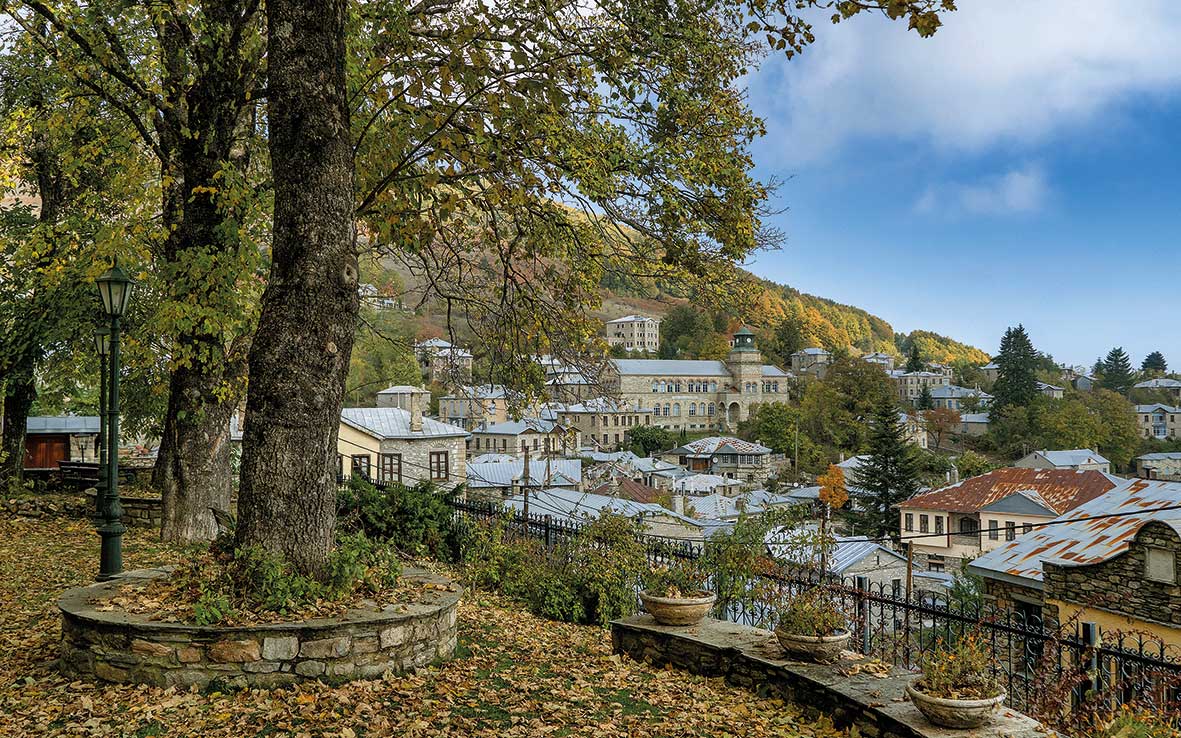
The enclosure of Saint Nicholas’ church is among the most photographed spots in Nymfaio.
© Perikles Merakos
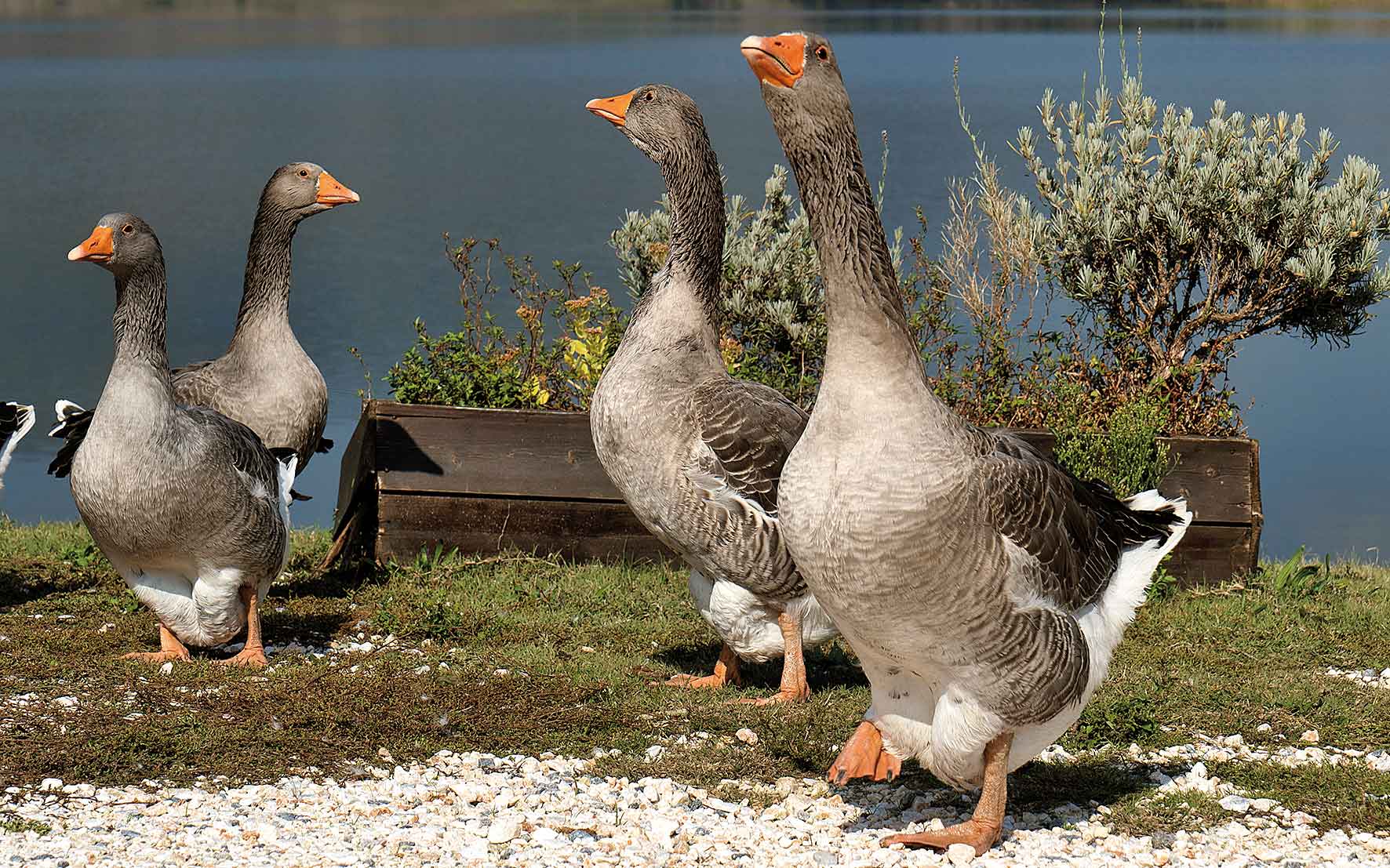
The geese of Limnochori, on the shore of lake Zazari.
© Perikles Merakos
While Zazari stuck in our minds thanks to a flock of angry geese, the neighboring lake of Cheimaditida (named after the wintering grounds which used to be used by flocks here) was made memorable by the 380 black goats, which are not a frequent site at tourist destinations. We also met some of the local fishers, like amateur Giannis, with his four rods baited with corn or fly, and professional Sakis, who sets out in his boat at dawn to cast his nets for pike.
Animal life everywhere on this trip – sheepdogs, wolves, bears and lynxes, squirrels, horses, geese and goats – co-exist with humans, acting as the best ambassadors for the destination.
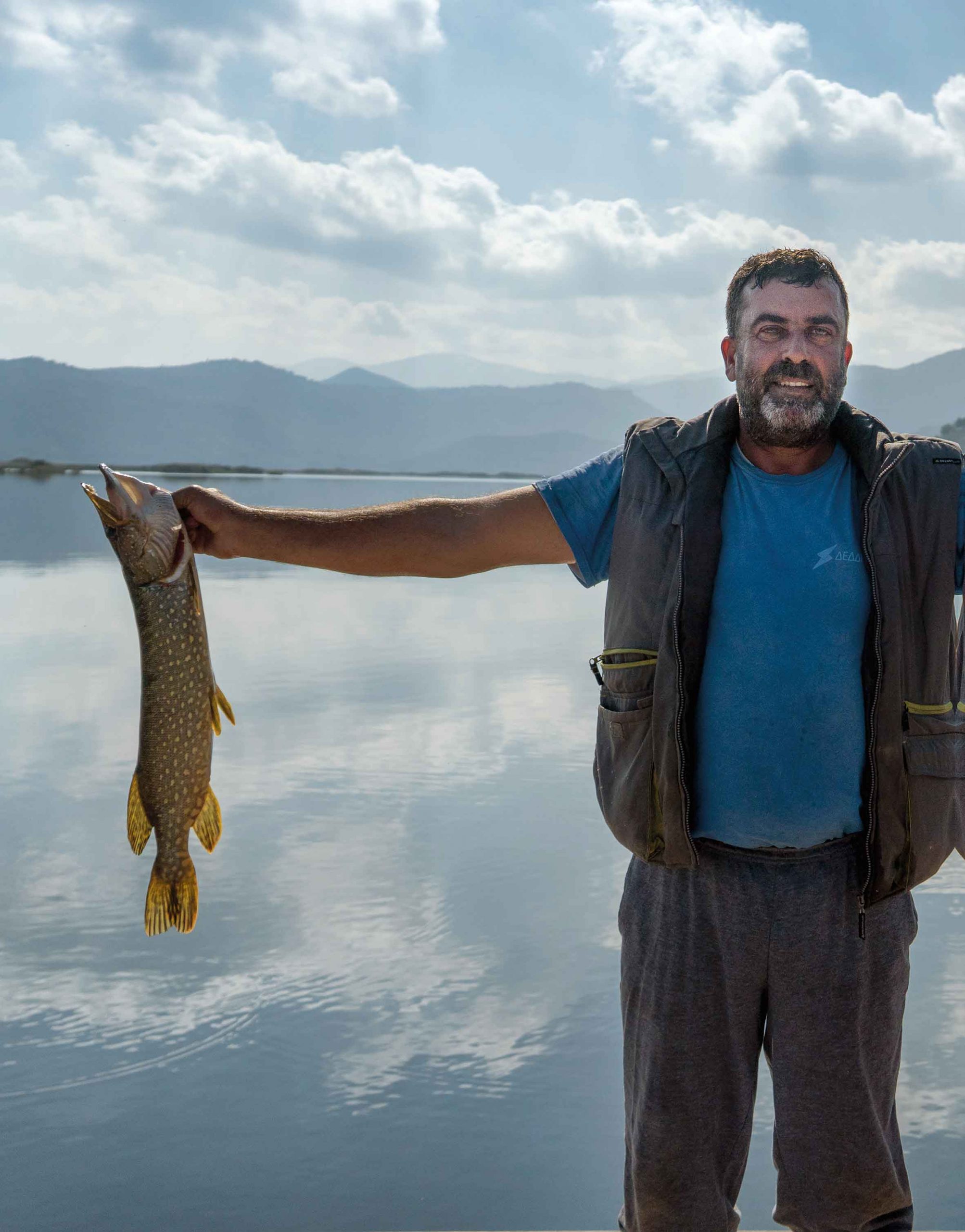
Fishing for pike on Lake Cheimaditida.
© Perikles Merakos
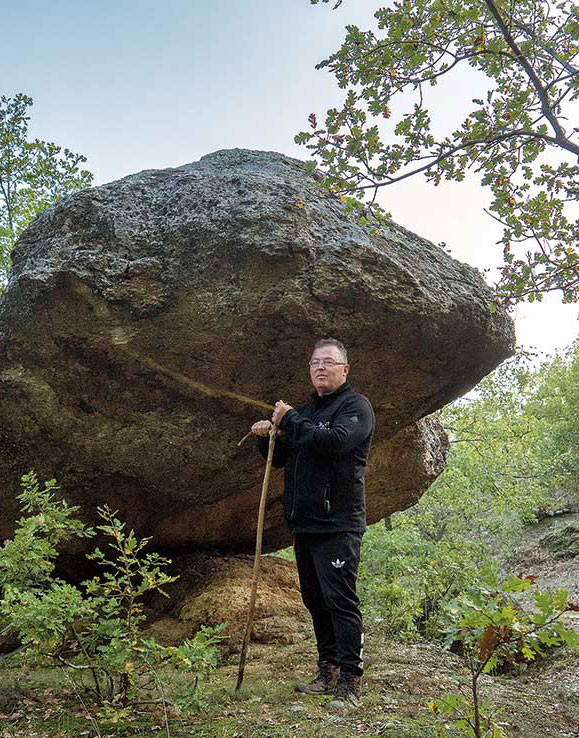
The shepherd’s crook from local hardwood is a useful accessory for a hike in the woods. Here, between the Wolf Sanctuary and lake Zazari.
© Perikles Merakos
There are some businesses which break through the narrow boundaries of their field, which don’t just offer a service but add value to a place. Two such businesses are the Archontiko Athina guesthouse in Nymfaio and the Thomas restaurant in Sklithro.
The building housing Archontiko Athina was officially characterised as a work of art by a ministerial decision in 1992, “because it is a representative example of the mansions built in Nymfaio at the end of the 19th century.” As a visitor, you don’t require a ministerial decision to appreciate its beauty.
After being closed for several years, the guesthouse reopened a few months ago, renovated and under new management. It boasts wooden ceilings, chandeliers, ornamental china with something of a Tsarist Russian accent, and a beautiful chalet in the garden where you can enjoy a morning coffee or evening drink. But its soul are two amazing ladies, Varvara and Elisabeth, which make you feel like a resident rather than a guest in the house. This makes the most of the old house, making guests feel truly at home.
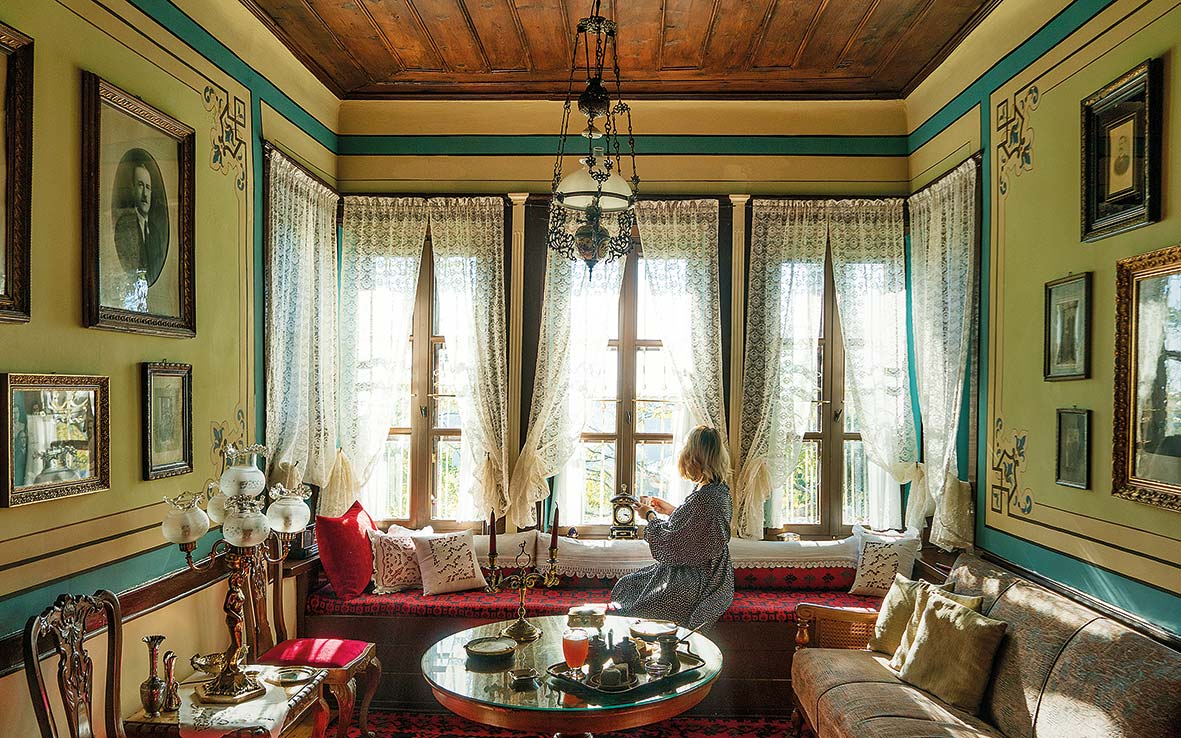
Shades of another era at Archontiko Athina, which has been characterised as a work of art.
© Perikles Merakos
If Archontiko Athina gives Nymfaio a good name, the same is true of Thomas’ restaurant in the village of Sklithro, one of the most notable eateries in the Florina district. At the helm of the restaurant, which serves creative Greek cuisine, are the second and third generation of the Paspalis family.
With a cellar which is open to visitors and three wine lists – one of which includes 365 Greek wines, one for each day of the year – Thomas serves mutton and tomato stew on eggplant puree, wild boar in red wine with xinohontro (handmade dried dairy pasta), orzo with snails, nettles and grated mizithra cheese, florinela ewe’s milk cheese with red pepper marmalade. The menu is designed and executed by a team comprising Vaggelis and his parents in the kitchen, and his brother Thomas in front of house. All but one of the staff are from the village, so the business helps to sustain the local economy.
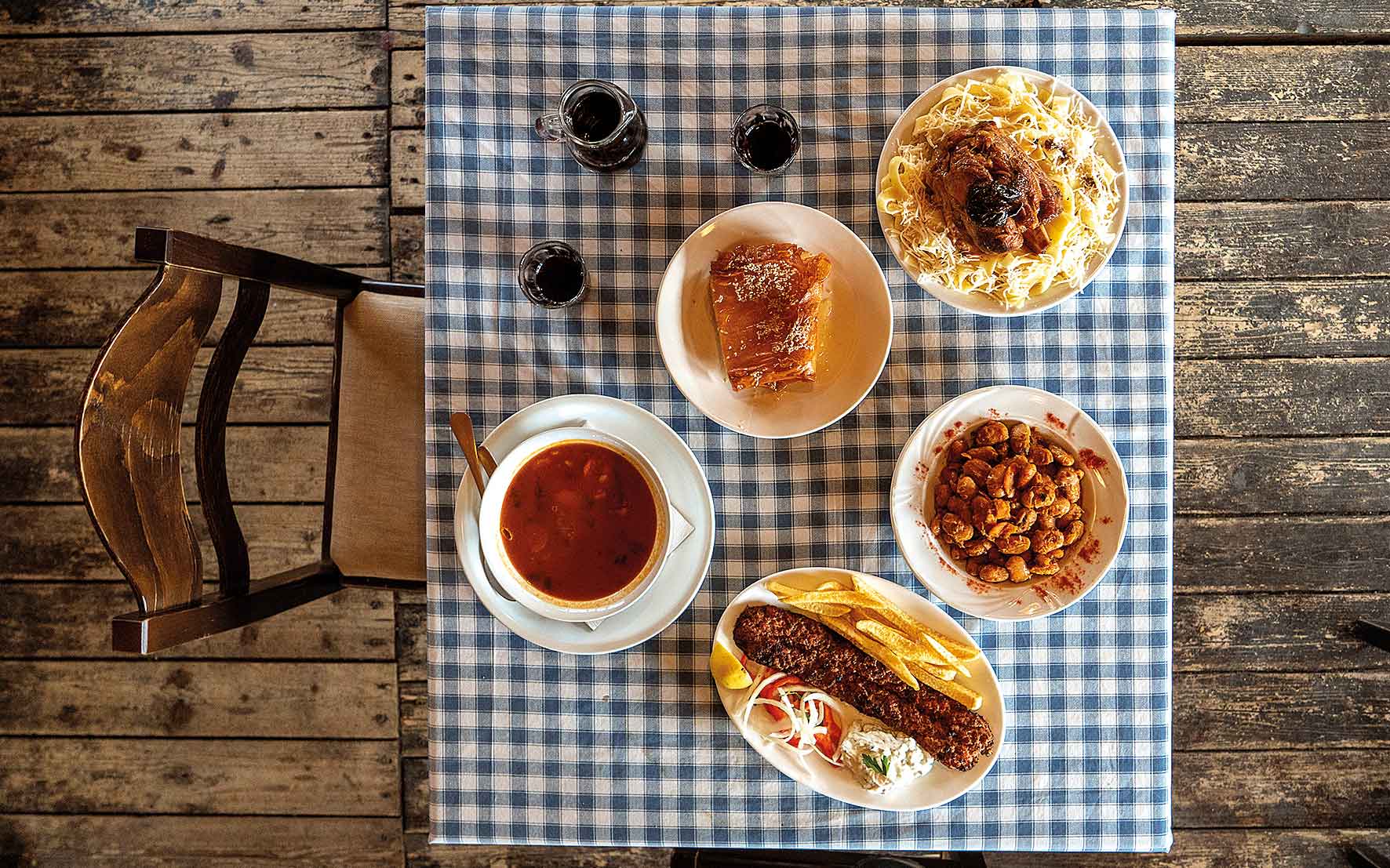
Plateia
© Perikles Merakos
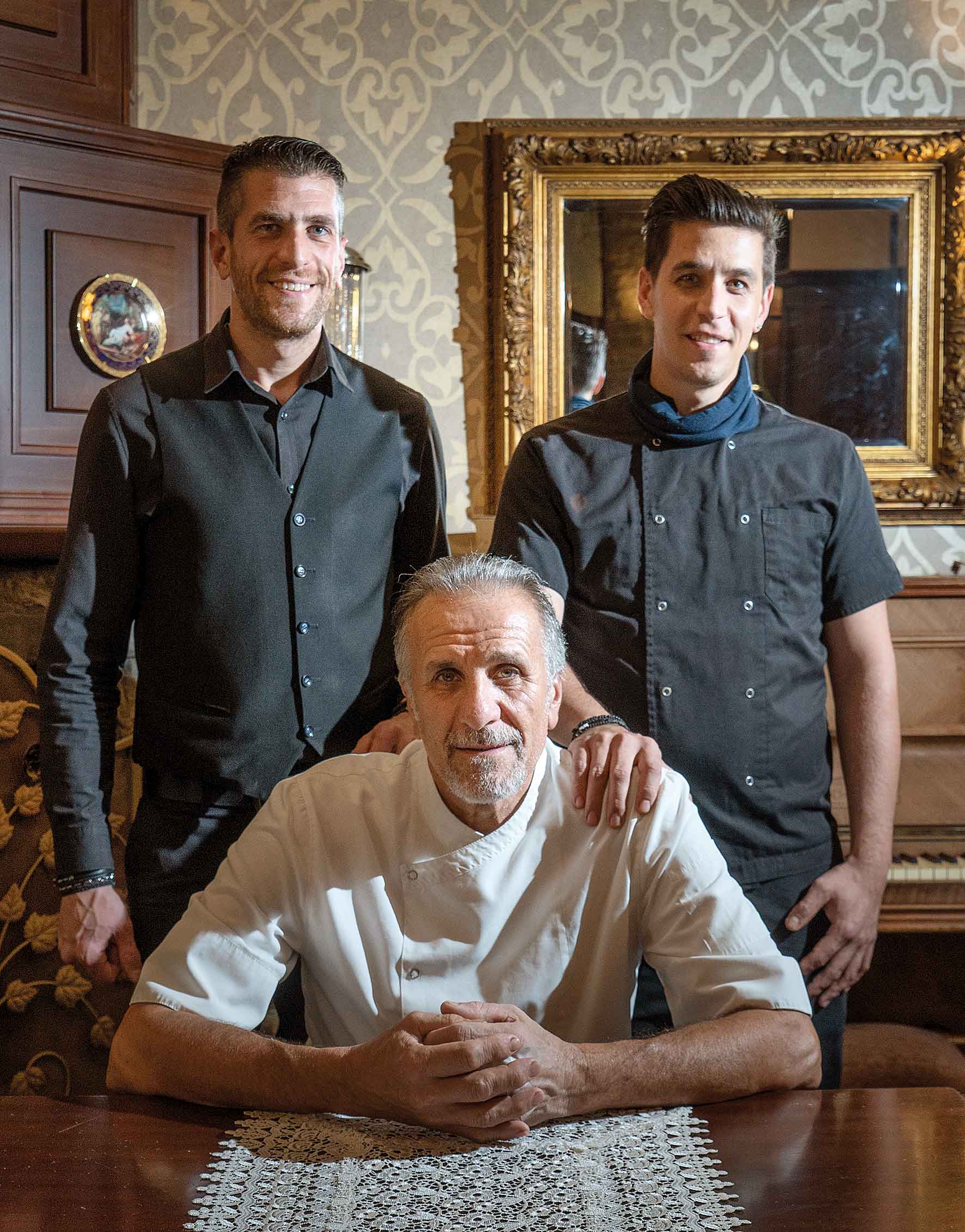
Thomas and Vaggelis with their father Nikos Paspalis.
© Perikles Merakos
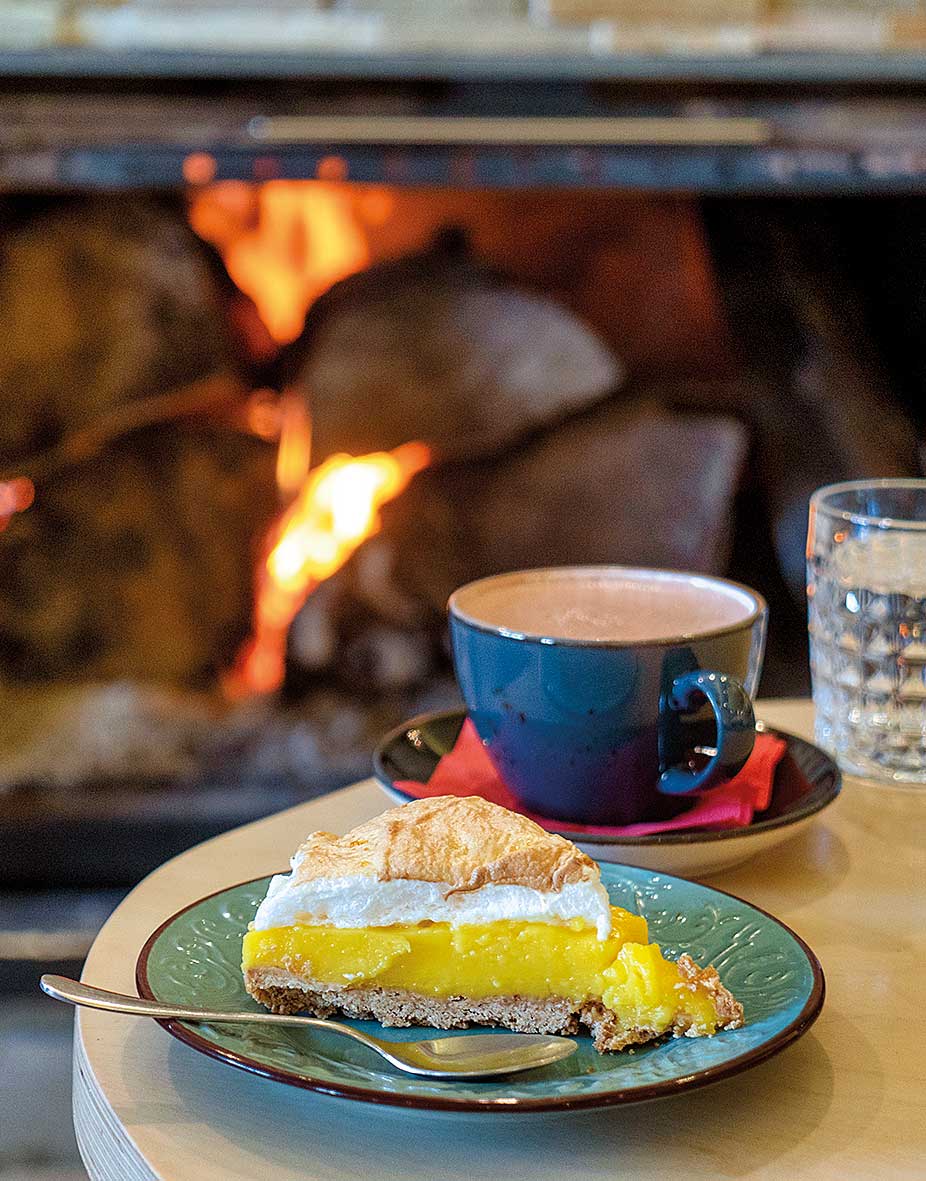
Enterné
© Perikles Merakos
GETTING THERE
Nymfaio is 530 kilometers (6.5 hours) from Athens. Fuel and tolls add up to around 25 euros one way. Alternatively, you can fly to Thessaloniki on Aegean or Sky Express (from 40 euros one way) and drive to Nymfaio (180 kilometers/2 hours, around 22 euros for fuel and tolls one way).
WHERE TO STAY
Archontiko Athina (Nymfaio, Tel. (+30) 23860.31141, Tel. (+30) 6932.588.299, from 100 euros for a double room) offers double and triple rooms and serves breakfast including laggites (pancakes), omelet with Florina peppers, yoghurt with seasonal fruit. You can also request your breakfast, coffee and a blanket to be packed in a picnic hamper, to enjoy it in nature. The renovated Argyro guesthouse (Nymfaio, Tel. (+30) 23860.31331, from 75 euros for a double room) offers rooms with formal, charming neoclassical décor in the style typical of the old mansions of Nymfaio. It has already gained an international reputation after being featured as a recommended destination in a Guardian feature based on readers’ recommendations. The Nymfes traditional guesthouse (Nymfaio, Tel. (+30) 3860.31114, from 100 euros for a double room) is housed in a renovated building dating to 1923 with six rooms, each of which is named after a nymph (Daphne, Euridice, Faethoussa, Filyra, Calypso, Lampetia) with decoration inspired by their myths. Another pretty accommodation option is offered by the Enterné guesthouse (Nymfaio, Tel. (+30) 23860.31230, from 70 euros for a double room) housed in the old village coffeehouse, and serving breakfast featuring home-made preserves, pancakes, eggs and traditional pies.
FOOD & SHOPPING
Nymfaio offers quite a few dining options, including café-restaurant Diporto (tel. 23860-31069) for veal cheeks, sheep in a clay pot, chuck steak and soups including nettle, tarhana with mushrooms, Constantinople-style soup with vegetables, cous-cous and hot pepper). Omegas Tigris (Tel. (+30) 6946.287.057) is recommended for its bean salad, kebabs and village sausage with melted florinella, while at Plateia (Tel. (+30) 6947.153.604) you can try bean soup or shin with hilopites noodles and raisin and prune sauce. At Ati (Tel. (+30) 23860.31069) you can enjoy sweets and pies, infusions and milkshakes, while at Enterné café (Tel. (+30) 23860.31230) you are offered hot chocolate, tea, sweets and Macedonian wines. Shopping options include Pantopoleio (Tel. (+30) 23860.31110) which stocks Florina peppers is a variety of guises, including chutney and spicy sauce and redcurrant liqueur – which there is a shortage of this year, we are gold, because the bears got there first. There is also Dadalina’s, Kyr-Yannis’s new wine shop (Tel. (+30) 23320.51100) which has only been open a few weeks. Apart from wine, it stocks premium vinegars from Naoussa and Amyntaio grapes, red pepper products etc. Beyond Nymfaio, we recommend a visit to Thomas (Sklithro, Tel. (+30) 23860.31206), as well as Brousko (Aetos, Tel. (+30) 23860.41305) where you will get to try chops, kebabs, handmade burgers and a pickle mix including carrot, cauliflower and green tomato. Their wines (red, rosé and white) come from the local Begoritis winery. At the café-bar-restaurant Del Iago (Tel. (+30) 23860.41382) in Limnochori, on the shores of lake Zazari, in addition to meat dishes (kebab, sausage, lamb ribs), you will find fish, including lakerda (pickled sardine), anchovy, and carp from the lake (which must be ordered in advance). The space is a former sheep stable, which has been converted into a modern dining establishment with attention to detail, including disabled access ramps.
WHAT TO DO
The Brown Bear Sanctuary in Nymfaio is open daily except Wednesdays, while the Brown Bear Information Center in the Nikeios school and the Wolf Sanctuary are open on weekends (combined entry pass 6 euros). There are extended opening times over the holidays (Tel. (+30) 23860.41500/31155). Information on the activities offered at the Artemis center (riding, hiking, canoeing on lake Zazari) can be found at Tel. (+30) 23860.31028.
TIPS
Just a short distance from Athens,...
On a quiet slope of northern...
Without noise or concrete, the Old...
Misty landscapes, snow-covered slopes, art, traditional...